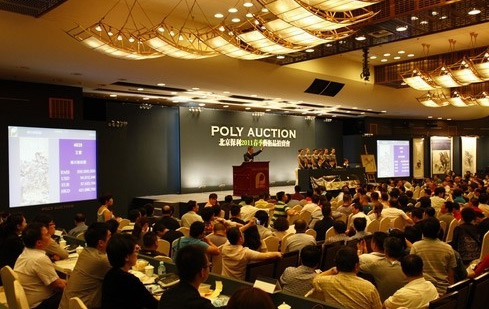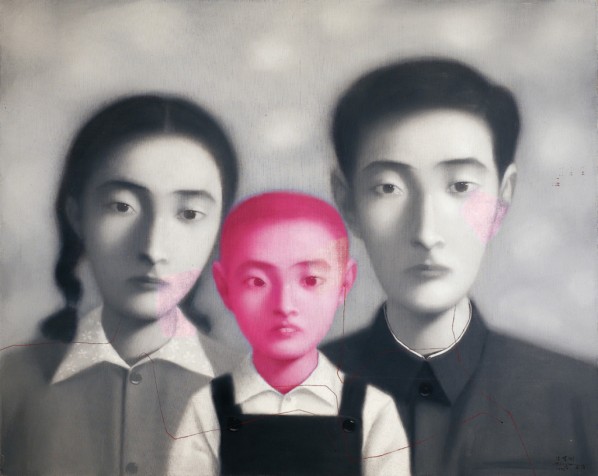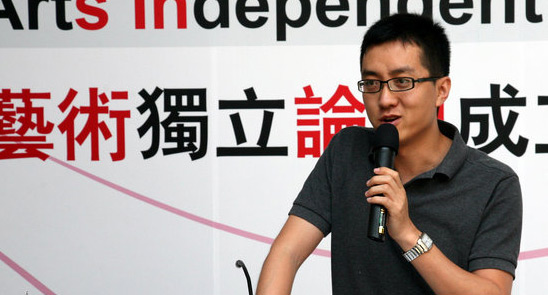by Zhu Xiaojun
In the popular statement "China saving the world", most believe that China has abundant foreign exchange reserves, relatively healthy financial systems and the economy's is rapidly recovering from the crisis. According to the data of the National Bureau of Statistics released in late January, the total GDP in 2009 amount to 33.5353 trillion yuan, up 8.7 percent over the previous year, among which the GDP's growing rate of the fourth-quarter returned to double digits, reaching 10.7%. This result demonstrates to the Western world that China takes advantage of "the necessary concentration" for efficient decision-making.
We found that, from the introduction of a 4 trillion economic stimulus package at the end of 2008, to the revitalization plan launched in early 2009 for ten industrial sectors: ships, automobiles, steel, textile and so on, in fact these are the core power of the beautiful transcript. In fact, as a relatively small industry, the art industry also requires industrial revitalization plan from the government with the purpose of consolidation.

Poly Auction in Beijing
Investors from various industries have praised the government's decisive policies - although in 2009 the art market was still stagnant, but after the economic environment took a turn for better, many galleries resurfaced from the severe winter of "zero sales". An important support behind this was the effective implementation of a series of national industrial revitalization plans. For the art industry, the government has begun to provide visible and feasible policies and financial support - the Ministry of Culture provides financial assistance to revered folk exhibitions through public selection, the Beijing government grants 5 million to support the contemporary art supermarkets project "Art Beijing" ... As far as the short-term effect is concerned, these immediate measures are very important for specific stimuli. However, to keep the rapid development and growth momentum of the art market permanently stable, it is necessary to treat the Sunday-school truth like "pushing forward industrial restructuring" and "the implementation of tax-deductible for enterprise collection" as the most urgent task.

Zhang Xiaogang's Bloodline:The Big Family, 1998

Zhang Xiaogang's Bloodline: Big Family No.1 sells for hk 65.6 million/us 8.4 million at Sotheby's Hong Kong Contemporary Asian Art Autumn Sale 2011.
The reason is simple, real change is difficult to achieve. Take the auction industry which is mainly concerned with the Chinese art market as an example: the rise and prosperity of the industry happened in just 10 years, to date, there are still dozens of auction houses competing in the market, however, in terms of the auction's quality and the degree of the scattered management, it is still less than the United Kingdom 100 years ago. But in today's England, in terms of Sotheby's and Christie's competitiveness, any of our auction companies cannot compete with them. Although ten years have passed and there have been competitive auction companies like Poly , but in general, the whole industry still lacks from a Leading enterprise and the benefits of scale. Among the independent companies, only Poly International Auction and China Guardian are striving ahead at a relatively robust pace.

Collectors Guy and Myriam Ullens at UCCA, Beijing
The situation of the gallery industry seems optimistic - both in scale and quality, in Beijing, Shanghai and other places, we have many branches of international galleries, Art Now Gallery, Long March Space, Shanghai Gallery of Art and a number of local heroes are gradually marching to international industry-standard, but the Chinese characteristics of the market situation, have led to the whole industry's difficulty in integration.
Where does the crux of the problem lie? The answer is in the haunting of various interests: when the market is in confusion, galleries and auction houses swarmed together ,they do not follow the rules of the market and business ethics, counterfeits in the antiques market flood in , the modern and contemporary art market becomes full of rampant speculation. Moreover, most people in the country's rich class lack basic aesthetic education, "buy paintings depending on ears" become a major feature of Chinese collectors. When the market falls into a downturn, then there are many galleries with a clearance sale of their collections or even closing their doors; the most popular anecdotal story is of collector Zhang Rui who was summoned by the police, if he is convicted and sentenced to prison, the collection of Chinese contemporary art that will lost is 1/5, in other words, the collection will be limited to a small crowd and certain circles which creates a chronic illness from which the art market has to grow stronger.
These questions provide us with a mirror for looking into the deep development of the market .The achievement of the whole art industry's revival and development requires large-scale reorganization of the industry and the implementation of tax-deductible benefits enterprise collections. It is necessary for the government to make great efforts. Since the establishment of a large art market lies not only in stimulating domestic demand and expanding consumption, but also in achieving our expectations for many years to come, that will bring art into life by raising awareness of the general public collections.
About the author

Zhu Xiaojun
Education
Graduated from Art History Department of Humanities Institute , Central Academy of Fine Arts, Beijing;
Now
Art Critic
Vice President of "Art Market" periodical publisher
The views expressed in this column are the author’s own and do not represent those of CAFA ART INFO.





























